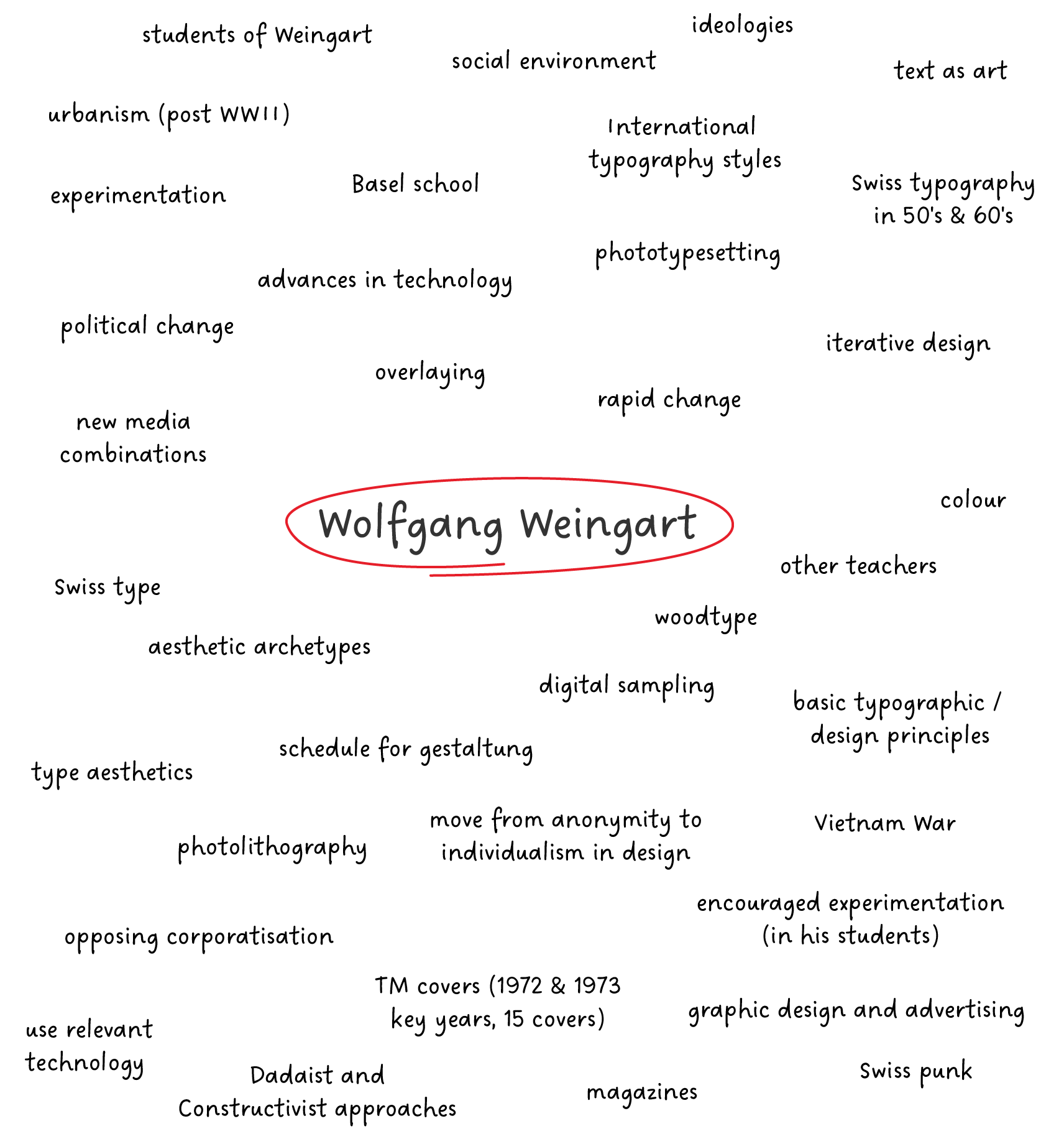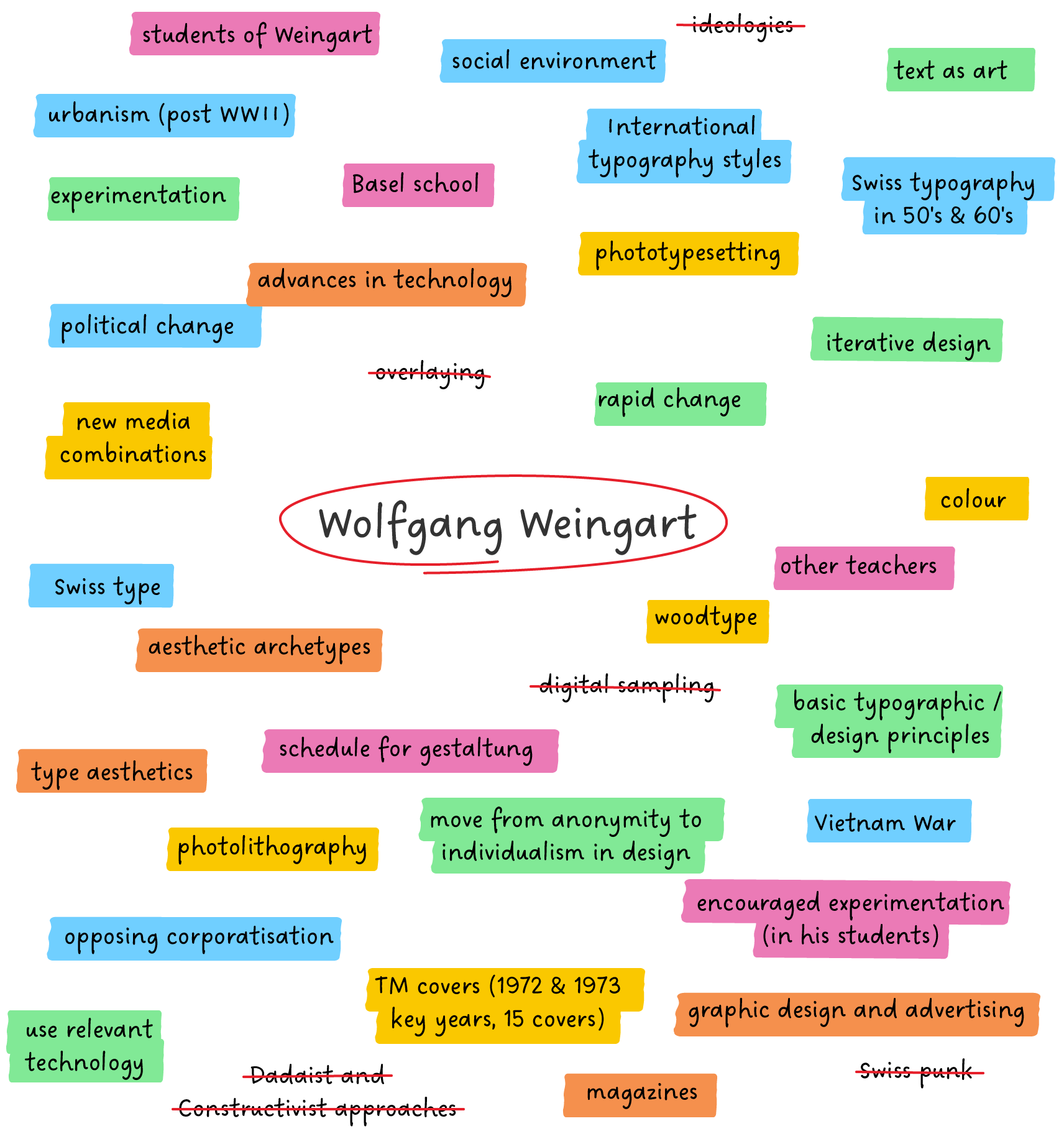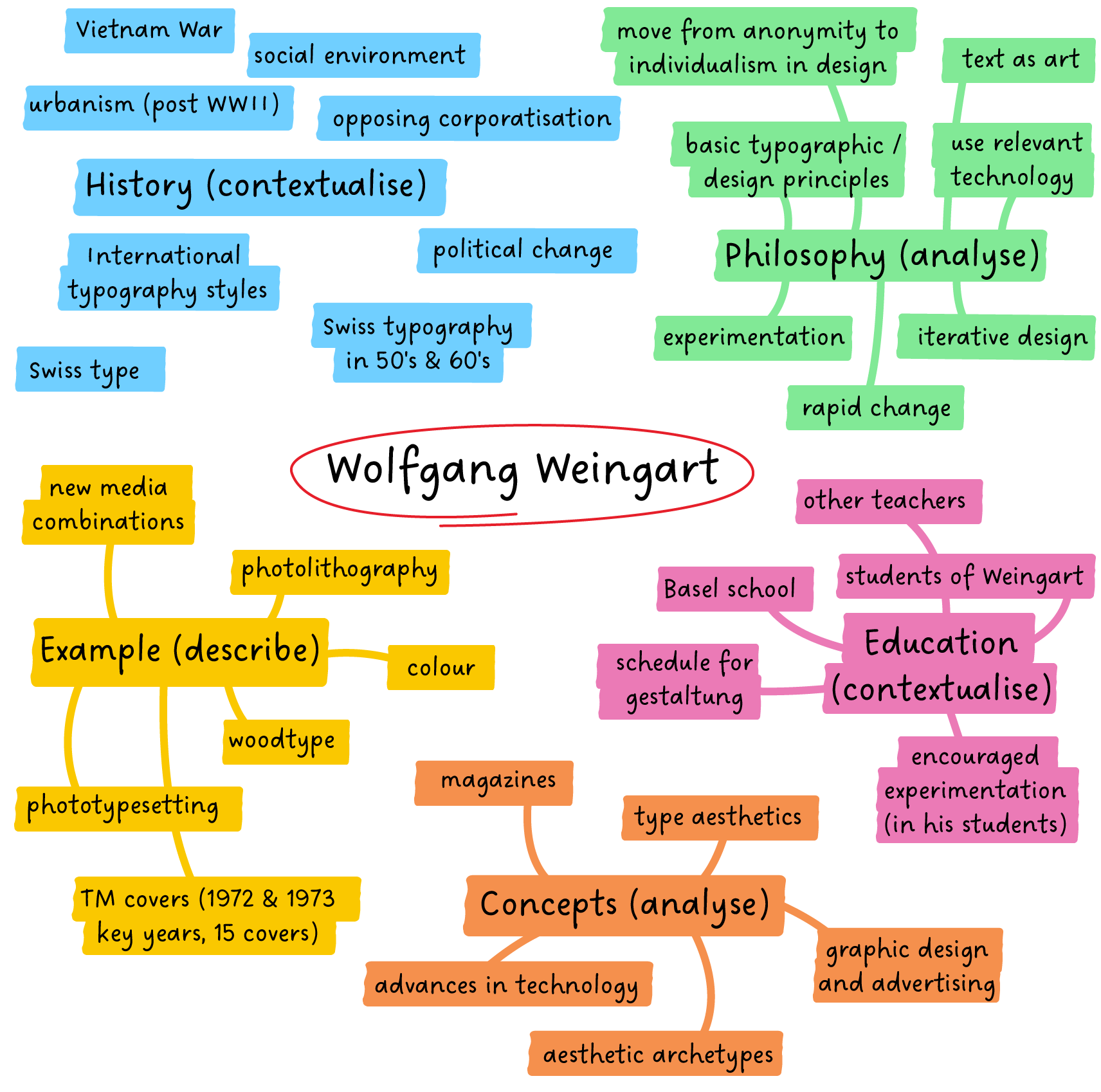Mind mapping an artist statement
Explore these skills in a real world context.
Critical writing involves analysis and review, supported by evidence. In design, it may take the form of an essay, visual analysis or journal article.
The process of writing an essay incorporates a number of elements: analysing the task, research, developing an organised structure through mind mapping, writing a first draft, revising and rewriting.
Planning is critical to the success of your essay. It helps guide your writing; allows you to focus on your topic and shapes the direction of your research.
The process generally follows the steps in the diagram below but there is overlap between stages and at times you will return to a previous stage as you refine and focus your argument.

Your first written draft will generally shape your essay. Look back at the essay topic; have you responded to all the elements you identified as important? Does the essay ‘flow’? Are your points relevant and do they contribute to your overall argument? You may ask for feedback from someone else as well. Redraft and refine your essay through critical editing.
Finally, proofread for punctuation and grammar errors. Confirm that your referencing and citations are correct before submitting your essay.
For more information, visit the Essay planning tutorial.
Mind mapping is a visual representation of the focus and structure of a task. The advantage of creating and developing a mind map is that it gives you a holistic view of the task and helps you identify relationships between ideas.
There are three stages in the process.
Stage 1: The free-thinking (brainstorming) stage. At this stage, all ideas are relevant.
The image features "Wolfgang Weingart" at the centre, circled in red. Surrounding it are various phrases and concepts related to Weingart's influence on typography and design. These include:
[/transcript]
Stage 2: The identification stage (initial mind mapping). This stage is where you identify and clarify relationships between ideas and discard anything outside of your focus.
Like the first image, this features "Wolfgang Weingart" at the centre, circled in red. The various phrases and concepts surrounding it are colour coded to group them together. A couple of topics are crossed out. [/transcript]
Stage 2: The identification stage (initial mind mapping). This stage is where you identify and clarify relationships between ideas and discard anything outside of your focus.
At the centre of the image is "Wolfgang Weingart," with categories branching out, each representing a different aspect of his influence: [/transcript]
Images on this page by RMIT, licensed under CC BY-NC 4.0